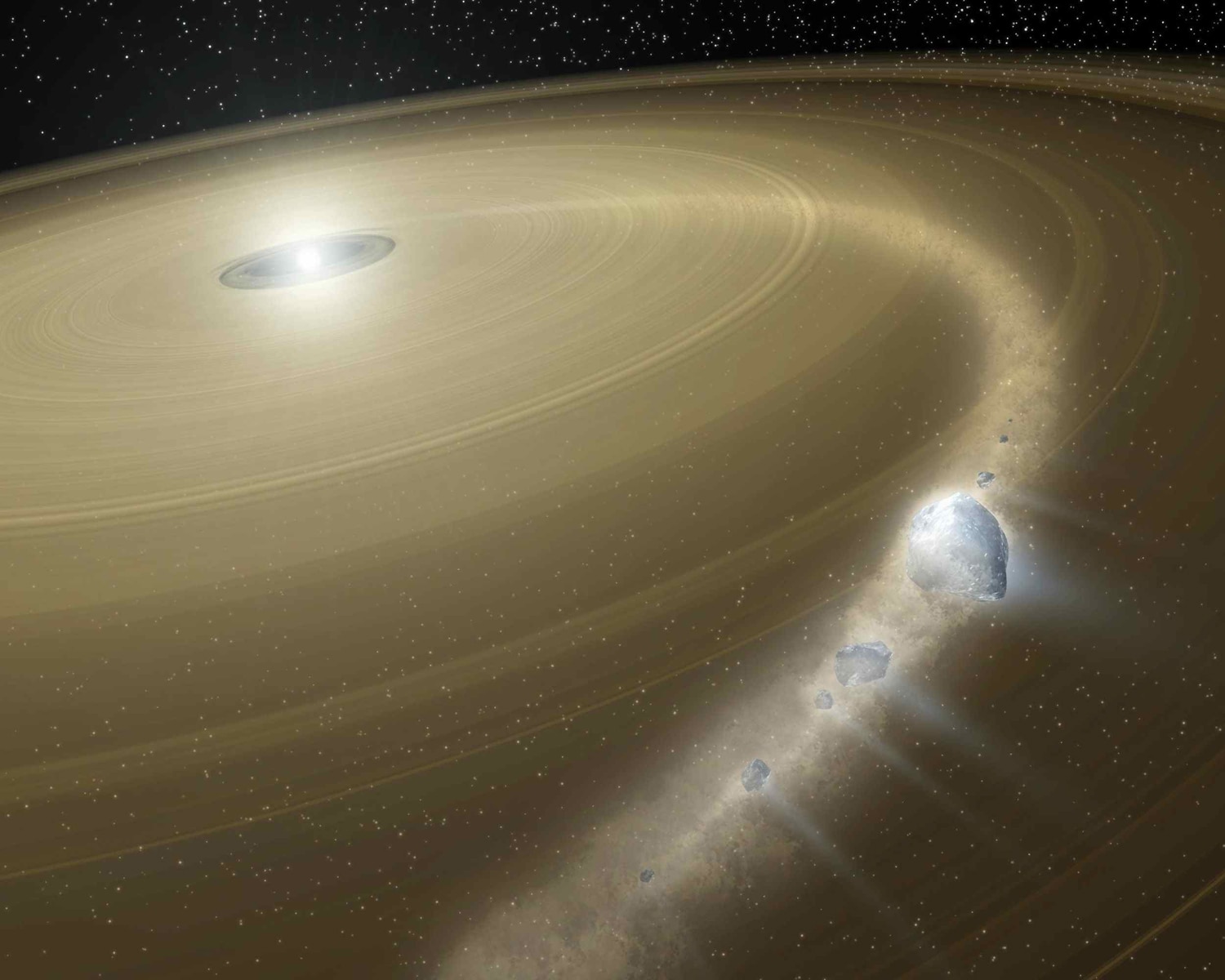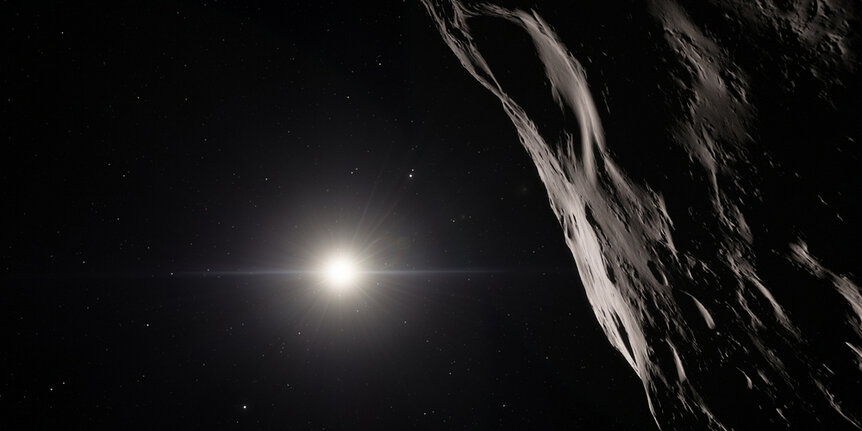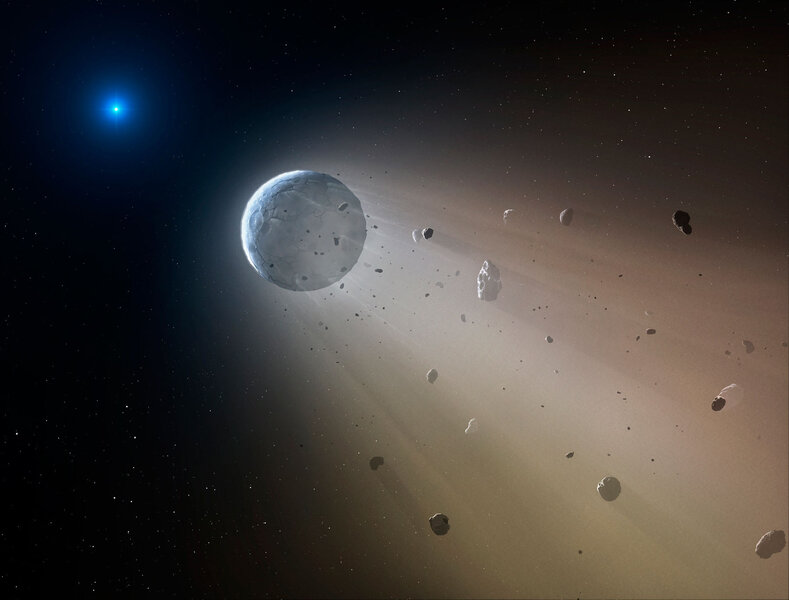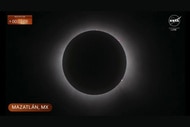Create a free profile to get unlimited access to exclusive videos, sweepstakes, and more!
Even after the Sun dies, it'll still destroy asteroids

Someday, the Sun is going to die.
Don't fret too much, since it'll be something like seven billion years in the future. That's a long time, plenty more than you'll likely need to get your own affairs in order.
We have a pretty good understanding of the steps the Sun will go through during that process (see, for example, chapter 7 of the book Death from the Skies!, sadly robbed of its deserved Pulitzer). In brief, it will run out of hydrogen to fuse in its core, and the core (now made entirely of incredibly compressed helium) will heat up immensely. This will cause the outer layers of the Sun to expand which both makes it much more luminous as well as turns it red. Eventually it will fuse that helium in its core into carbon, and the outer layers will contract again. Then it will run out of helium. The carbon core will then get even hotter, the Sun will swell even larger than it did before, and get even more luminous.
At that point it'll shed its outer layers, blowing them off into space, exposing the dense hot core: The Sun will be a white dwarf.
During those expansion phases it will literally engulf Mercury and Venus. Current thinking is that Earth will survive, for a broad enough definition of the word: While it won't find itself inside the Sun, it'll be cooked to a ball of lava by the intense heat from the Sun during the red giant phases.
Studies have been done about the outer planets, too, showing they'll lose a lot of atmosphere but likely survive the process, more or less.
But… what about asteroids?
These chunks of rock and metal orbit the Sun mostly between Mars and Jupiter, so they won't get et. But that doesn't mean they'll survive.
In fact, new research shows that the Sun's giant phase will treat them very harshly: It will spin them up so rapidly they'll fly apart, disintegrating into debris. Once pulverized, the dusty debris will be dragged down to the white dwarf, where they'll fall to the surface and rapidly sink into the interior.
Huh. I guess in the end they do get et.
The process here is called the YORP effect, and happily I've explained this before:
A very odd but important concept in physics is that even though light doesn't have mass, it has momentum. When sunlight hits an asteroid, the asteroid warms up and re-radiates that heat away as infrared light. If the asteroid were perfectly spherical and non-rotating, the only effect would be to push the asteroid farther from the Sun (think of it like a very gentle breeze blowing on the asteroid, giving it a teeny tiny push).
But if the asteroid is spinning, or has an irregular surface (which, of course, they do; they have craters and pits and cracks and so forth), then that light it emits can be sent away at an angle, and this generates a small torque, causing the asteroid to spin faster. Over time, it can significantly change the asteroid's rotation! That depends on many things, like the exact shape of the asteroid, how reflective it is, how close it gets to the Sun, and more. This process is called the YORP effect, due to it being dreamed up by scientists named Yarkovsky, O'Keefe, Radzievskii, and Paddack.
If an asteroid is solid, it can be spun up to pretty rapid speeds without too much ill effect. But most small asteroids are “rubble piles”, literally zillions of chunks of rocks held together by their own gravity. Because they're small their gravity is weak, so as they start to spin up due to YORP the centrifugal force on them gets significant. They feel a force outward, counteracting the weak gravity, and that means they can fly apart.
The YORP effect depends on a lot of things, but because it's based on starlight, the more luminous a star is the faster the effect works. When a star becomes a red giant it gets very luminous indeed, with some stars blasting out radiation at rates tens of thousands of times what the Sun does now. This means that asteroids in that distant future will get spun up very rapidly and fly apart on timescales much much shorter than now: It will only take a couple of million years. Stars like the Sun can be red giants for well over half a billion years, so it doesn't look good for the rubble piles.
As an aside, the astronomers also looked at what happens right after an asteroid flies apart, and found that many will do so in an irregular manner, flinging off chunks that orbit the bigger one, creating binary asteroids! However, this stage doesn't last long either. The YORP effect will act on each piece, tending to drag the smaller one back to the bigger one. Complicating things is the tidal effect, which tends to increase the distance between the two. It's possible they'll balance for a while, and the binary will remain stable. But in the end, it's likely the fate remains the same as before: Disintegration.
But even then it's not all over. Even when an asteroid spins itself to dust, that dust (plus the debris from the countless other asteroids so affected) will form a disk around the (now white dwarf) Sun. Another effect kicks in then: Poynting-Robertson drag. It's similar to YORP, but acts on teeny dust grains. A grain absorbing sunlight tends to re-emit that light as infrared photons in the direction of its travel. That means it loses orbital energy, dropping it down toward the Sun.
Eventually it'll fall to the surface. White dwarfs have a lot of elements in them like carbon and oxygen, but they also have hydrogen and helium, which are lighter. Those latter rise to the surface while heavy elements sink; the vast majority of material on a white dwarf's surface is hydrogen and helium.
So that used-to-be asteroidal dust won't last long when it falls to the surface; it'll sink down into the white dwarf and be gone forever.
I'll note this isn't just theory. We've seen quite a few “polluted” white dwarfs, with traces of heavy elements on their surfaces. Perhaps ¼ to ½ of all white dwarfs show these features, meaning that many are in the process of eating asteroids as we watch. In fact, the first evidence ever found (in 1917!) of planets orbiting another star was due to this exact thing!
Well, ex-planets.
Such is the fate of our solar system. The inner planets cooked, the outer planets blow-torched, and even the asteroids pulverized and doomed to add their feeble mass to that of the now-dead Sun. If it's any consolation, that'll happen with tens of billions of other stars in the galaxy as well.
Yeah, I know. Small comfort.
But still, I'm fascinated by all this. Imagine: We can understand the fate of the Sun billions of years in the future, likely long after humanity's fate has itself played out. When we look up into the night sky, we have at least some idea of what will happen eons hence.
















